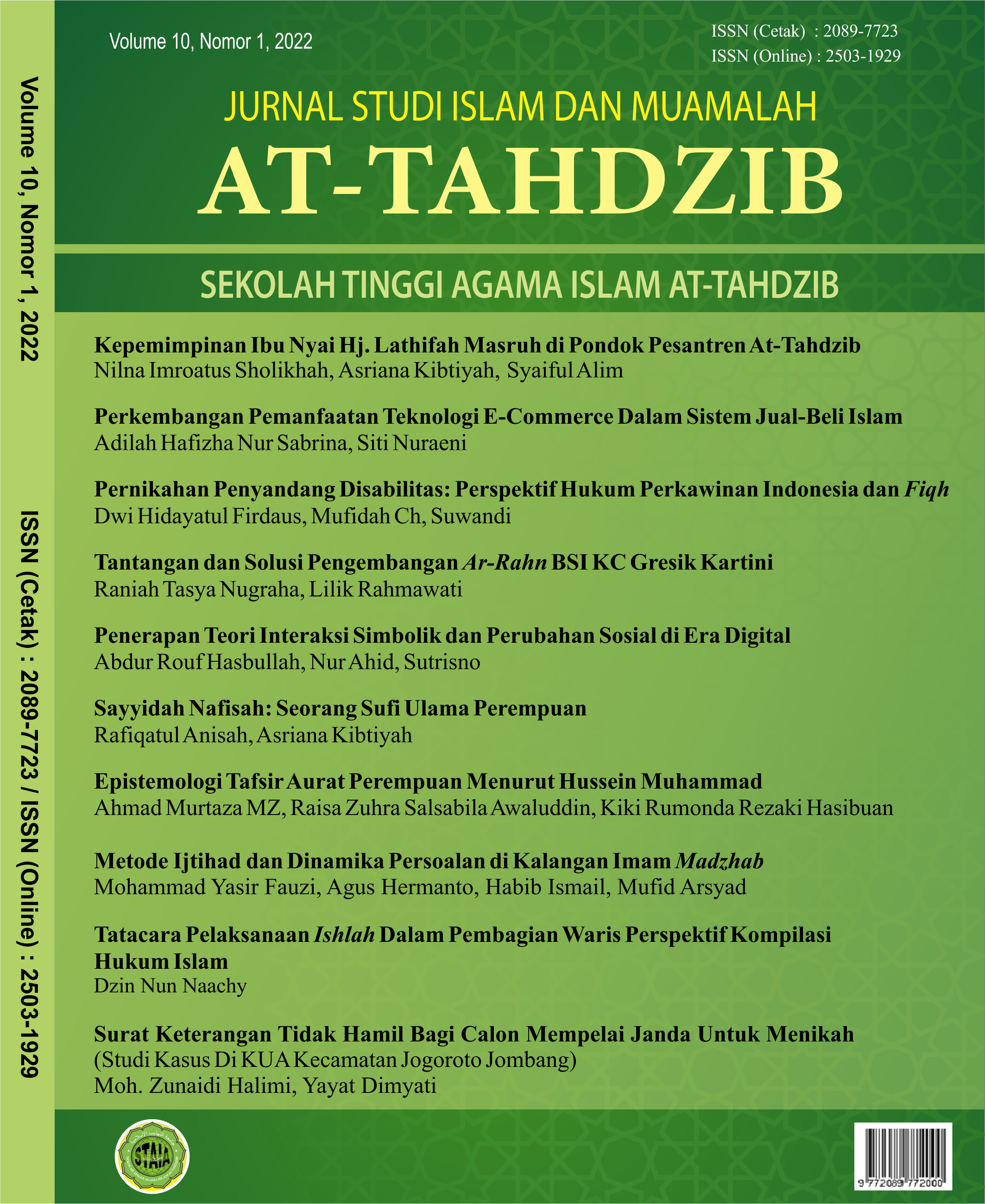Kepemimpinan Ibu Nyai Hj. Lathifah Masruh Di Pondok Pesantren At-Tahdzib
Abstract
Background. The leadership of Islamic boarding schools has distinctive characteristics according to Islamic religious culture and values. In respect to the teacher (Kiai/Nyai) by the students is a necessity. In addition to the existence of a Kiai as a “leader in the boarding schools, the figure of a Nyai in the leadership of boarding schools education†is also very essential. The leader has his own unique and distinctive nature, habits, temperament, character and personality so that behavior By applying dynamic leadership, character education in Islamic boarding schools is increasingly advanced and develops while maintaining religious purity which is the main characteristic of Islamic boarding schools.
Aim. This study aims to produce descriptive data related to leadership, strategies, and leadership methods Mrs. Nyai Hj. Lathifah Masruh in developing the At-Tahdzib Islamic boarding school.
Methods. The research method used in this research is field research using a qualitative model. The nature of this research is descriptive analysis and uses interview, observation and documentation data collection techniques.
Results. The results of this study found that Mrs. Nyai Hj. Lathifah masruh uses and applies strategies and methods that are certainly good, in her strategy she applies the strategies of listening, clarifying, solving problems, and motivating. So that he is a figure who plays a role not only in the At-Tahdzib Islamic boarding school, but also plays an important role in the At-Tahdzib Islamic boarding school. Then in terms of his method “using the method of giving orders, motivating with praise, and giving reprimands, and “having sensitivity or tolerance, as well as his efforts to have leadership qualities “that are in accordance with the example of the leader, namely Rasulullah SAW.
References
Ad-Dumaiji, Abdullah, 2021, Imamah ‘Uzma konsep kepemimpinan dalam Islam. Jakarta Timur: Ummul Qura.
Al Munawar, Said Aqil Husain, 2005, Alquran membangun tradisi kesalahan hakiki. Ciputat: Ciputat Press.
Al-Bukhari, Shahih Bukhari. Semarang: Toha Putra.
Asep Solikin, Fatchurahman, Supardi, 2017, Pemimpin yang melayani dalam membangun bangsa yang mandiri. Anterior Jurnal, 16, 2.
Asy’ari, M. Kholil, 2014, Metode pendidikan Islam. Jurnal Qathruna, 1, 1.
Didin Kurniadin & Imam Machali, 2012, Manajemen pendidikan konsep & prinsip pengelolaan pendidikan. Yogyakarta: Ar-Ruzz Media.
Dimyati, Hamdan, 2014, Model kepemimpinan & sistem pengambilan keputusan. Bandung: Pustaka Setia.
Halim dkk, 2005, Manajemen pesantren. Yogyakarta: Pusataka Pesantren.
Hamdani, 2011, Strategi belajar mengajar. Bandung: Pustaka Setia.
Hikmat, 2014, Manajemen pendidikan. Bandung: Pustaka Setia.
Kompri, 2018, Manajemen dan kepemimpinan pondok pesantren. Jakarta: Prenadamedia Group.
Muhammad Gafur Kadar dkk., 2021, Manajemen strategik dan kepemimpinan. Medan: Yayasan Kita Menulis.
Nizar, Samsul & Zainal Efendi Hasibuan, 2019, Kepemimpinan pendidikan dalam perspektif hadis telaah historis filosofis. Jakarta Timur: Kencana.
Sudjana, 2010, Metode dan teknik pemelajaran partisipatif. Bandung: Falah Production.
Susilo, 2006, Kepemimpinan Sulaiman bagi para usahawan. Yogyakarta: Indonesia Cerdas.
Udin Syaefudin Saud, 2016, Efektivitas kepemimpinan di pondok pesantren. Jurnal Ilmu Pendidikan dan Pengajaran, 3, 1.
Wahyuni, Sri, Zainal Arifin, 2016, Kepemimpinan demokratis Nyai dalam pengembangan pondok pesantren. Jurnal Manajemen Pendidikan, 1, 1.
Zulkifli, 2011, Metodologi pengajaran Bahasa Arab. Pekanbaru: Zanfa Publissing.
Copyright (c) 2022 At-Tahdzib: Jurnal Studi Islam dan Muamalah

This work is licensed under a Creative Commons Attribution 4.0 International License.

Jurnal Studi Islam by At-Tahdzib is licensed under a Creative Commons Attribution 4.0 International License.
Based on a work at http://ejournal.kopertais4.or.id/mataraman/index.php/tahdzib





